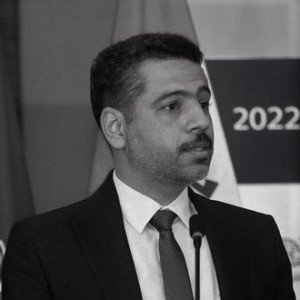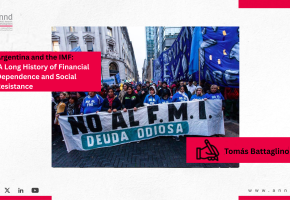
Enforced Disappearance: The luxury of environmental activism under the rule of arms

Enforced Disappearance: The luxury of environmental activism under the rule of arms - Wael Monther
It was supposed to be a typical day for Jassim Al-Asadi, an engineer, environmental activist, and director of the office of Nature Iraq in al-Ahwar in the south of Iraq. That morning, he decided to go to Baghdad on a business trip. But before he reached the capital's outskirts, he was kidnapped by an armed professional group in civilian clothes. They grabbed him from his car and took him to an unknown location. Nothing was known about him during his enforced disappearance that lasted for two weeks.
Al-Asadi led a campaign with the National Committee to Save al-Ahwar marshes, the largest wetlands ecosystem in the Middle East and West Asia. They consist of an interconnected group of lakes and swamps, including four bodies of water. Historically, they extended over 20 thousand square kilometers or more and acted as reserves for plants, wild animals, and resident and migratory birds.
Furthermore, three archaeological sites, the cities of Uruk, Eridu, and Ur, make up parts of the ruins of Sumeria, established in Mesopotamia between the fourth and third millennia BC on the banks of the Tigris and Euphrates. Ur's importance stems from being the birthplace of Prophet Abraham. Pope Francis paid a visit to the city in 2021.
The question of ending forced disappearances in Iraq remains unanswered, given the absence of an appropriate legal system. Al-Asadi's kidnapping brought back a recurring image during the sectarian strife after 2005 and when ISIS controlled a third of the country in 2014. To a lesser extent, it brings back attention to the widespread protests at the end of 2019, which saw many civilians, military personnel, and political and civilian activists kidnapped and forcibly disappeared. However, until today, the results of the investigations are still mostly hidden from the public. The fate of many victims remains unknown, and they are likely to have died.
A long history of eternal crimes
The decades-old question of the missing in Iraq remains unsolved. More than a million people have been subject to disappearance in the past 45 years. The practice began with the previous regime, which used it for political, ethnic, and sectarian reasons. It continued after 2003 and targeted human rights defenders and media workers.
In November 2010, Iraq ratified the International Convention for the Protection of All Persons from Enforced Disappearance and adopted it in its national legal system. Thus, the Parliamentary Human Rights Committee attempted to legislate a law to criminalize the practice. However, it collided with a governmental request to suspend the legislative process pending a project it had been working on for several years, which remains in the drawers. Thus, calls by the United Nations Committee on Enforced Disappearances (CED) after its visit to Iraq had no impact on the ground. CED's request to take urgent measures to include acts of enforced disappearance as an independent crime in national legislation has not yet found a listening ear.
Who is behind the crime?
Enforced disappearances, arrests, detentions, abduction, or any other form of deprivation of liberty are usually carried out by State agents or persons or groups of persons acting with the authorization, support, acquiescence, or willful disregard of the State. They are followed by a refusal to acknowledge the deprivation of liberty and concealing the victim's fate or whereabouts, depriving them of legal protection. Many were kidnapped and released by the same forces without the investigations reaching the perpetrators or parties behind them.
In this case, the fingers of blame point to armed parties functioning outside the framework of the law, which often use the State's capabilities to achieve their goals with impunity. This method is frequently used strategically to spread terror within society. The feeling of insecurity that arises from this practice extends its impact on local populations and society as a whole. Its purpose is not limited to silencing the voices of the opposition, journalists, or human rights defenders. It is also used to terrorize entire societies, especially when associated with physical violations, such as torture and intimidation, as with al-Asadi. They showed clearly on his face and body when he arrived in his city.
It seems that al-Asadi's calls to protect the marshes and draw the world's attention have collided with the interests of highly influential parties. They decided to kidnap and abuse him, expecting he would be forgotten. However, they did not expect the ensuing public anger that pushed the prime minister to call for his release. He also pledged to rescue him from his kidnappers, who then willingly set him free.
Who is affected by enforced disappearance?
Kidnappers do not aim at the act of disappearance per se. They often want to influence victims and their families by disappearing or silencing them after release. According to the CED, families are also victims due to the harm they suffer, moral and material. Their constant search for their relatives may not end, and they may be exposed to harm while seeking the truth. The impact also includes the panic spread in the local community.
Returning to the opening question, can the government end enforced disappearances through an integrated law criminalizing the act? My opinion may seem to some as pessimistic. Al-Asadi had merely called to conserve the wetlands in the south as a source of environmental diversity. He only wanted to preserve a way of life and traditional knowledge passed down from generation to generation. He struggled to make the voice of the people of these areas heard and their right to a healthy life guaranteed. Yet the security authorities failed to issue an official statement, whether on the day of his abduction or his release. His captors released him, and the matter was limited to a post on the Facebook page of the official spokesman of the Armed Forces Commander-in-Chief five days after his abduction. It followed the announcement of al-Asadi's brother about his enforced disappearance during a call to a satellite channel.
Sources:
1- Ahmed Eid, "The Impoverishment of Southern Iraq: Crises Messes with the Lives of 60% of Marshland Residents," Al-Araby Al-Jadeed, 11/12/2022:
2- Mayada Daoud, "Iraq: Forced Disappearances Fueled by Impunity," Irafaa Sawtak, 29/8/2022
3- Law on Iraq's Accession to CED: https://www.moj.gov.iq/uploaded/4158.pdf
4- UN CED website: https://www.ohchr.org/en/treaty-bodies/ced
5- UN News, "Enforced Disappearances in Iraq: UN committee calls for urgent legislative reform and end the suffering of disappeared relatives," 25/11/2022: https://news.un.org/ar/story/2022/11/1115972
Recent publications



